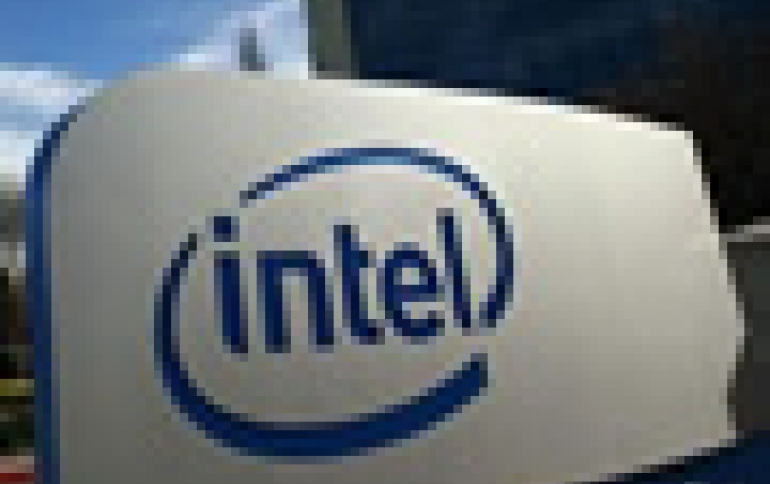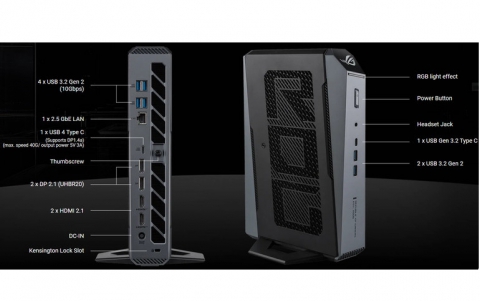
Intel Accelerates Data Center Networks
Today at the Open Networking Summit, Intel announced the
Intel Open Network Platform, introducing several hardware
and software tools aimed at boosting data center networking
efficiency and performance.
During a keynote, Rose Schooler, vice president of the Intel
Architecture Group and general manager of the Communications
and Storage Infrastructure Group, discussed how using
standard x86 servers and programmable switches to deploy and
manage virtualized networking infrastructure with
software-defined networking will lower costs and enable data
center and telecom networks to deploy new services. To see
how software-defined networking and Intel's network function
virtualization as complementary networking technologies are
poised to transform the way networks are designed, deployed
and managed across data center and telecom infrastructure
environments, watch this video.
Intel announced three reference architectures that will enable the IT and telecom industries to accelerate hardware and software development for software-defined networking (SDN) and network function virtualization (NFV).
These reference architectures, aimed for the telecommunications, cloud data center and enterprise data center infrastructure market segments, combine open standards for SDN and NFV with Intel hardware and software to enable networks to be more agile and intelligent so they can adapt to changing market dynamics.
"SDN and NFV are critical elements of Intel's vision to transform the expensive, complex networks of today to a virtualized, programmable, standards-based architecture running commercial off-the-shelf hardware," said Rose Schooler, vice president of Intel Architecture Group and general manager of Intel's Communications and Storage Infrastructure Group. "The reference designs announced today enable a new phase in the evolution of the network and represent Intel's commitment to driving an open environment that fosters business agility and smart economics."
Data centers and network infrastructure providers are under constant pressure to support new, revenue-generating services in the public and private cloud, yet the costs of building the infrastructure are often too high to do so. The reference designs and development kits are an important part of Intel's strategy to enable the industry to move toward open, standards-based technologies such as SDN and NFV.
SDN and NFV are complementary networking technologies poised to transform how networks are designed, deployed and managed across data center and telecom infrastructure environments. By separating control and data planes, SDN allows the network to be programmed and managed externally at much larger and more dynamic scale for better traffic control across the entire datacenter. NFV allows service providers to virtualize and manage networking functions such as firewall, VPN or intrusion detection service as virtual applications running on a high-volume x86-based server.
Codenamed "Seacliff Trail," the Intel Open Network Platform (ONP) Switch Reference Design is based on scalable Intel processors, Intel Ethernet Switch 6700 series and Intel Communications Chipset 89xx series, and is available now. The ONP Switch Reference Design will include Wind River Open Network Software (ONS), an open and fully customizable network switching software stack using Wind River Linux. Wind River ONS allows for key networking capabilities such as advanced tunneling as well as modular, open control plane and management interface supporting SDN standards such as OpenFlow and Open vSwitch. Common, open programming interfaces allow for automated network management, and coordination between the server switching elements and network switches enabling more cost-effective, secure, efficient and extensible services.
Network architectures have traditionally been optimized for large packet throughput to meet the needs of enterprise end-point applications. Intel is executing a project aimed at improving small packet throughput and workload performance that can be achieved on the Open vSwitch using the Intel DPDK. Intel is specifically re-creating the kernel forwarding module (data plane) to take advantage of the Intel DPDK library. The Intel DPDK Accelerated Open vSwitch is planned to initially be released with the Intel ONP Server Reference Design in the third quarter of this year.
This server reference platform, codenamed "Sunrise Trail," is based on the Intel Xeon processor, Intel 82599 Ethernet Controller and Intel Communications Chipset 89xx series. The ONP Server Reference Design enables virtual appliance workloads on standard Intel architecture servers using SDN and NFV open standards for datacenter and telecom. Wind River Open Network Software includes an Intel DPDK Accelerated Open vSwitch, fast packet acceleration and deep packet inspection capabilities, as well as support for open SDN standards such as OpenFlow, Open vSwitch and OpenStack. The project is in development now: the first alpha series is slated to be available in the second half of this year.
Many ISVs, OEMs and service providers are building solutions on top of Intel's switch reference architecture, including ATT Foundry, Big Switch Network, Chunghwa Telecom, HP, NEC, NTT Data, Quanta, Super Micro and VMware.
Intel announced three reference architectures that will enable the IT and telecom industries to accelerate hardware and software development for software-defined networking (SDN) and network function virtualization (NFV).
These reference architectures, aimed for the telecommunications, cloud data center and enterprise data center infrastructure market segments, combine open standards for SDN and NFV with Intel hardware and software to enable networks to be more agile and intelligent so they can adapt to changing market dynamics.
"SDN and NFV are critical elements of Intel's vision to transform the expensive, complex networks of today to a virtualized, programmable, standards-based architecture running commercial off-the-shelf hardware," said Rose Schooler, vice president of Intel Architecture Group and general manager of Intel's Communications and Storage Infrastructure Group. "The reference designs announced today enable a new phase in the evolution of the network and represent Intel's commitment to driving an open environment that fosters business agility and smart economics."
Data centers and network infrastructure providers are under constant pressure to support new, revenue-generating services in the public and private cloud, yet the costs of building the infrastructure are often too high to do so. The reference designs and development kits are an important part of Intel's strategy to enable the industry to move toward open, standards-based technologies such as SDN and NFV.
SDN and NFV are complementary networking technologies poised to transform how networks are designed, deployed and managed across data center and telecom infrastructure environments. By separating control and data planes, SDN allows the network to be programmed and managed externally at much larger and more dynamic scale for better traffic control across the entire datacenter. NFV allows service providers to virtualize and manage networking functions such as firewall, VPN or intrusion detection service as virtual applications running on a high-volume x86-based server.
Codenamed "Seacliff Trail," the Intel Open Network Platform (ONP) Switch Reference Design is based on scalable Intel processors, Intel Ethernet Switch 6700 series and Intel Communications Chipset 89xx series, and is available now. The ONP Switch Reference Design will include Wind River Open Network Software (ONS), an open and fully customizable network switching software stack using Wind River Linux. Wind River ONS allows for key networking capabilities such as advanced tunneling as well as modular, open control plane and management interface supporting SDN standards such as OpenFlow and Open vSwitch. Common, open programming interfaces allow for automated network management, and coordination between the server switching elements and network switches enabling more cost-effective, secure, efficient and extensible services.
Network architectures have traditionally been optimized for large packet throughput to meet the needs of enterprise end-point applications. Intel is executing a project aimed at improving small packet throughput and workload performance that can be achieved on the Open vSwitch using the Intel DPDK. Intel is specifically re-creating the kernel forwarding module (data plane) to take advantage of the Intel DPDK library. The Intel DPDK Accelerated Open vSwitch is planned to initially be released with the Intel ONP Server Reference Design in the third quarter of this year.
This server reference platform, codenamed "Sunrise Trail," is based on the Intel Xeon processor, Intel 82599 Ethernet Controller and Intel Communications Chipset 89xx series. The ONP Server Reference Design enables virtual appliance workloads on standard Intel architecture servers using SDN and NFV open standards for datacenter and telecom. Wind River Open Network Software includes an Intel DPDK Accelerated Open vSwitch, fast packet acceleration and deep packet inspection capabilities, as well as support for open SDN standards such as OpenFlow, Open vSwitch and OpenStack. The project is in development now: the first alpha series is slated to be available in the second half of this year.
Many ISVs, OEMs and service providers are building solutions on top of Intel's switch reference architecture, including ATT Foundry, Big Switch Network, Chunghwa Telecom, HP, NEC, NTT Data, Quanta, Super Micro and VMware.





















